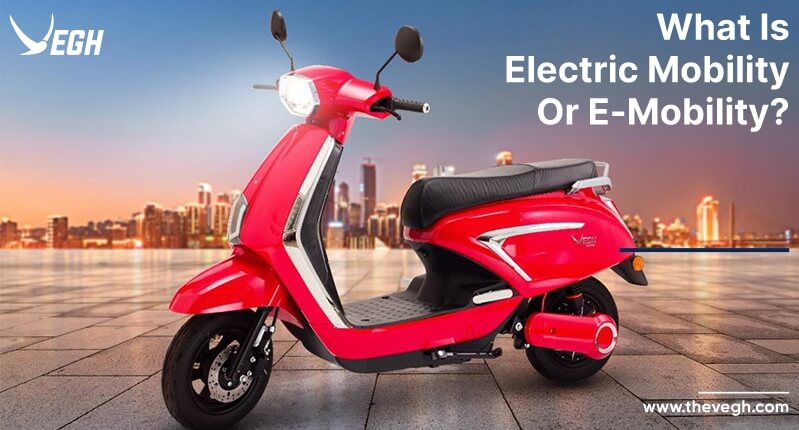
According to the definition, electric mobility includes all street vehicles powered by an electric motor and derive their energy mainly from the power grid – in other words, they can be recharged externally. In this blog, we will try to understand India’s entire electric vehicles industry ecosystem.
The use of electric cars, as well as electric scooters, electric bikes, e-buses, and e-trucks, is called electric mobility. They all have one thing in common: they are totally or partially powered by electricity, have a way of storing energy on board, and get most of their energy from the power grid. Electric cars are quiet, efficient, low-emission vehicles primarily utilized in cities for delivery services, taxis, and car sharing.
One of the primary benefits of electric mobility is that it enhances people’s quality of life by not causing any kind of pollution as the ICE vehicles do. Also, by pollution, we are not just talking about the harmful gasses, but also the noise pollution. EVs are quieter than ICE vehicles.
That is why it is regarded as critical to achieving sustainable mobility and is gaining increasing support worldwide through public policies such as electrification of urban public transportation, changes in tax policies, the development of regulatory frameworks, and even its incorporation into planned urban infrastructures.
The Charging Infrastructure Includes All the Technology and Software that Guarantees Energy is Transported From the Electric Grid to the Car:
The market for electric two-wheelers is divided into two parts. First is the slow electric two-wheelers, whose speed is just 25 Km/H. Second is the high-speed two-wheeler electric vehicles. In India, one doesn’t need any license to drive a low-speed electric two-wheeler but needs a license for a high-speed electric two-wheeler.
It is estimated that by the end of 2030, almost 80% of the two-wheelers on the roads of India will be electric ones. The market for electric three-wheelers and electric cars is very small in India. There are only a handful of players in the car segment, and the electric three-wheeler segment is limited to electric rickshaws.
The electric vehicle industry is divided mainly into 3 parts:
1. Motors
2. Controllers
3. Battery
Permanent Magnet Synchronous Motor for Electric Mobility (PMSM)
In the two-wheelers, a PMSM motor is used. PMSMs, like BLDCs, use permanent magnets in their rotors. PMSMs features a sinusoidal back electromotive force (EMF) waveform, unlike BLDC motors, which have a trapezoidal back EMF. They are suited for traction motors because of their simple construction, high efficiency, and high power density (common in hybrid vehicles, EVs, and buses). PMSM motors are more efficient than IM motors. The disadvantages of this design are expensive costs, eddy current loss in PMs at high speeds, and a reliability risk due to the possibility of magnets breaking.
PMSM motors are classified into two types: surface-mounted permanent magnet (SPM) and permanent interior magnet (IPM) synchronous motor drives. IPM motors outperform SPMs in terms of performance, but their design is more complicated.
The role of the controller is to control the power supply coming out of the battery and going to the motor. Controllers are attached to the motors. So basically motors and controls are considered as a single unit.
As a single unit, a motor controller is a combination of power electronics and embedded micro-computing elements that efficiently convert energy stored in an electric vehicle’s batteries to motion.
Other than moving energy from the battery to the motor to provide acceleration for the vehicle, motor controllers may also return energy from the motor to the batteries, allowing electric vehicles to brake more effectively than a basic mechanical braking system. This feature, known as “Regenerative Braking,” also helps the electric vehicle’s range by storing energy back in the batteries at each instance of braking.